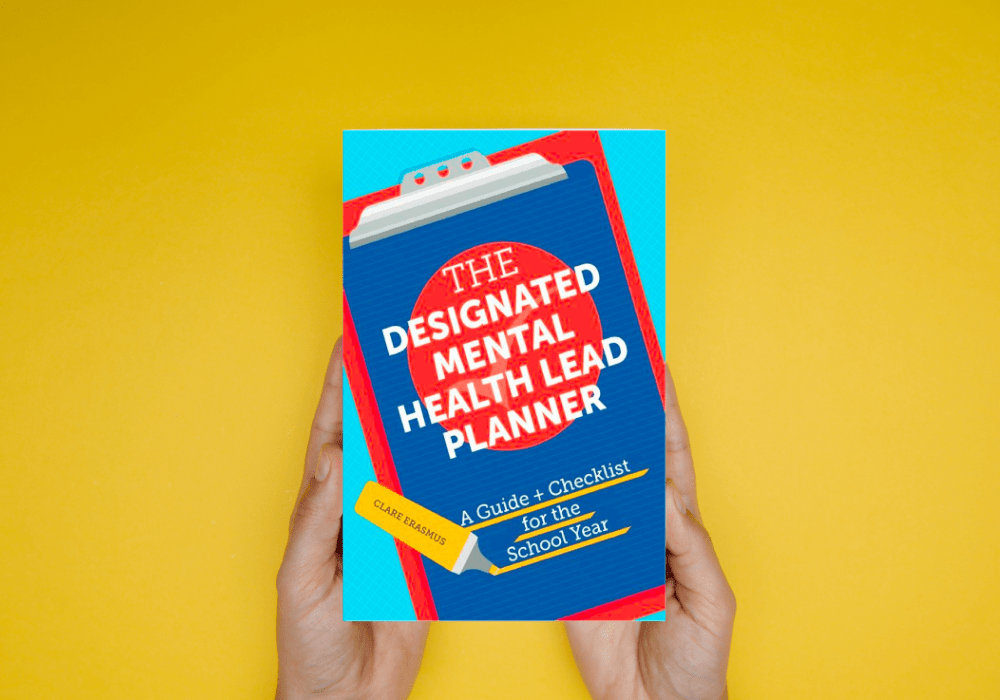PDF of printable DMHL year planner, from Clare Erasmus' new book, The Designated Mental Health Lead Planner (£18.99, Jessica Kingsley Publishers).
KS1, KS2, KS3, KS4
Years 1-11
A school that aims to adopt a culture of mental health and wellbeing will need a whole-school approach. There are many key stakeholders who all need to be involved and working with each other. It is important to write a yearly planner that feeds into the school development plan (SDP).
This free, printable template from The Designated Mental Health Lead Planner (£18.99, Jessica Kingsley Publishers) will help you organise your tasks, ensuring you focus on mental health throughout the year, not just during Children’s Mental Health Week or on World Mental Health Day.
A school that aims to adopt a culture of mental health and wellbeing will need a whole-school approach.
There are many key stakeholders who all need to be involved and working with each other. It is important to write a yearly planner that feeds into the school development plan (SDP).
The different strands for a whole-school approach are about having focus on:
Leadership, strategy and governance
This thread will focus on governance, student and staff consultation, the curriculum and wider curriculum, ensuring it all feeds into the strategic vision.
Staff professional development…
…for mental health and wellbeing and guidance for staff in supporting their own mental health. This is all about training and ensuring there are dedicated inset days or CPD ensuring staff are trained on children’s mental health and that mental health is everybody’s business, not just the designated mental health lead’s (DMHL) and mental health first aiders’ (MHFA).
Plus, it’s about ensuring staff mental health and wellbeing is high on the agenda when it comes to the leadership team seeking to prioritize workload reduction, destigmatizing the conversation about mental health and ensuring the school actively promotes a culture of wellbeing, kindness, care and trust.
Student mental wellbeing…
…and identifying students at risk. This is all about doing an audit of what the school is already doing for students, listening to the students’ voices, ensuring what is put in place is commensurate with students’ needs and ensuring the safeguarding of all students with early and relevant interventions.
Curriculum planning and resources
This is all about ensuring your school is meeting the government’s new statutory PSHE requirements regarding health education, relationships education and mental health.
Teaching about mental health and emotional wellbeing could be delivered through the PSHE curriculum and threaded through the wider curriculum that the school aims to offer.
The DMHL needs to have an overview of this and ensure the focus is to make sure that pupils can make an informed choice about their own and their peers’ mental health and wellbeing, and that they 44 The Designated Mental Health Lead Planner are aware of support both in the school and the community, and what are negative and positive coping strategies.
Working with parents and the community
It is widely regarded that parents and schools are a 50/50 partnership in bringing up and educating children, and that if both parties work together, then there is consistency for the child and the life skills we are teaching are more likely to be accepted.
The success of any school mental wellbeing programme is also dependent on the role of the parents in engaging in mental wellbeing conversations, interventions and promoting lifestyle choices that encourage positive mental wellbeing.
This thread is about ensuring that the parents are involved and are encouraged to actively contribute to the culture of care and wellbeing.
Working with external agencies…
…and provision of support services. This thread means that each term the DMHL ensures that referral pathways to external agencies are clearly understood and all working parties are debriefed and given accurate records.
Assessing, tracking and recording…
…concerns and interventions. This thread is all about due diligence and ensuring that all parties are clear about the referral pathways for a safeguarding concern, that cases are accurately triaged and relevant interventions are put into place and then clearly tracked and assessed against clear outcomes.
Once you have written your yearly planner, these threads will then feed into your termly planners. You will see I have put together a list of suggestions for each term that the DMHL could consider.
Obviously, each school’s demographic is different, as are their needs, and the approach will differ slightly for primary and secondary schools.
What I have tried to ensure is that each thread is revisited each term, and the DMHL can track progress, from setting up structures, quality assuring policies, introducing concepts and then embedding the culture of mental health and wellbeing in all areas of school practice over the course of a school year.
Finally, the DMHL will be able to track the progress each term, ticking the relevant boxes: Some evidence of being embedded or fully embedded and evidenced.
The Designated Mental Health Lead Planner, by Clare Erasmus, is now available in paperback (£18.99, Jessica Kingsley Publishers). Find out more about Clare’s work at cerasmusteach.wordpress.com and follow her on Twitter at @cerasmusteach.











